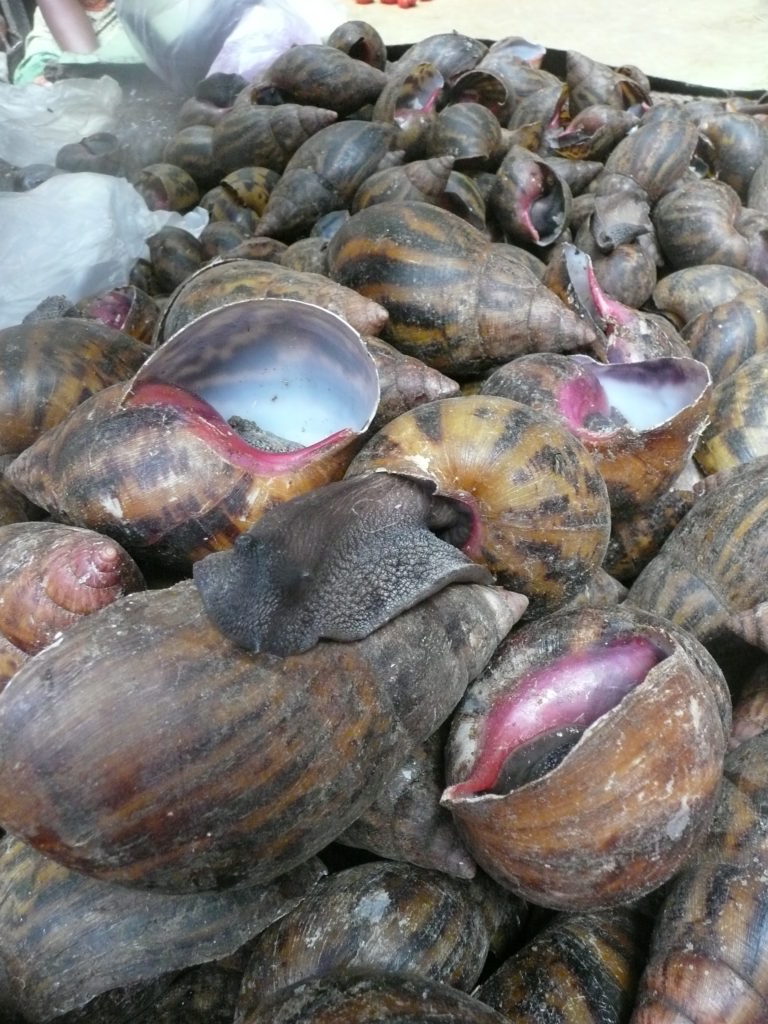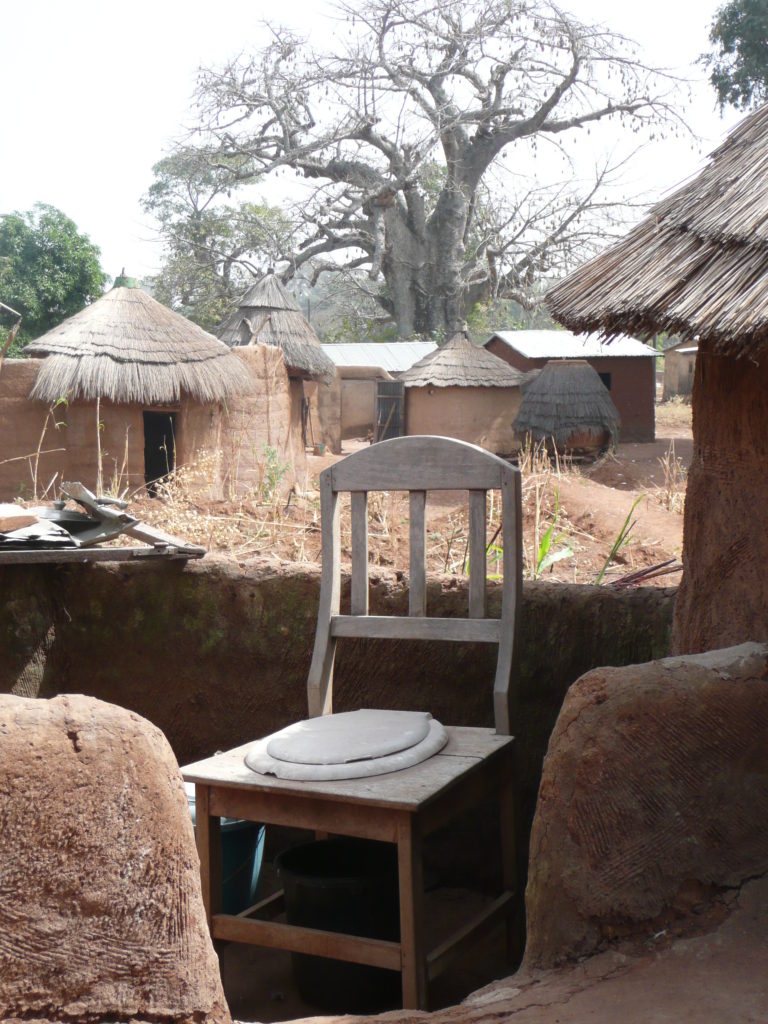I have been checking out the local wildlife, not to look at, but to eat though, principally agouti, which is a like a huge plump rat but actually of the porcupine family and a common bush meat in West Africa. The first time I tried it there was an overpowering, rancid stench which was a tad off putting, but I later discovered that this was just the way some country folk preferred it: once killed you leave it sitting around until it starts going off, then hack it into random chunks and throw it in the pot. Thankfully most people smoke it to preserve it soon after killing it, before hacking it into random chunks and it’s actually bloody tasty, though some may find the rat like tail disconcerting it’s useful to hold when eating the hind portions without getting sauce everywhere. And before you ask it tastes nothing like chicken. One butcher did have, proudly displayed amongst the meats available to order sign, rat, though I gather this is the countryside dwelling version rather than the many I have seen scurrying around sewage drains and rubbish infested streets. Top marks have to go to biche – which is a lovely, cute, little antelope and absolutely delicious. There were other things on offer but I suspected we were getting a bit too far up the endangered species list, including something that was described as a bit like a small pangolin. For the uninitiated it’s like an elongated armadillo with much bigger scales and provokes in me the kind of attachment that small girls reserve for fluffy dogs and little ponies so I gave it a miss. Octopus have the same effect on me but the African climate doesn’t seem to suit them too well.
Millet, a grain like, staple foodstuff here is virtually unknown at home but Africans seem to find never ending uses for it: its flour can be used to some extent like any other but if you are expecting light, fluffy doughnuts you’ll be very disappointed; it’s a basis for a variety of starchy food stodges; sweet and savoury snacks; numerous drinks, sweet or sour, alcoholic or non and in all likelihood a building material.
Street food makes for a sensible, money saving option as a good meal may only be 70p, though I have paid as little as 15p for a plate of food. Even average hotels or more European type restaurants will charge £4 and up. The ladies who dish up these delights must have some concept of hygiene as, despite regular meals in mud huts and squalid shacks next to open sewers and ad hoc rubbish tips I have avoided any major trouser incidents. I’ve even ended up drinking the local water at times, which probably means that the first whiff of organic broccoli once home will lead to a week of intimacy with the porcelain.
Whilst on the subject, the horrors of African toilets are indeed the stuff of nightmares and found on an almost daily basis. It has to be said though, that I have yet to encounter anything worse than some of the unspeakable terrors lurking at English festivals, where the contents of the toilet have not always been below the level of the seat. The novelty of bleach appears not to have reached the cleaning staff at bars and clubs, at least in the sleazy dives I tend to end up in, in fact I am not at all sure that cleaning staff have actually reached them either. Sit anywhere near the toilet of a West African nightclub and you will soon be overpowered by the acrid stench of urine. The idea of projecting your urine at a relatively confined space in order that it can be transported away is obviously one which has not occurred to many African males. I can only pray that the women who go to night clubs have a slightly better grip of hygiene, but as I have yet to carry out any field studies it remains conjecture. Also, given the type of ladies you often encounter in nightclubs I am not convinced that hanging around ladies toilets would be an entirely profitable venture.






